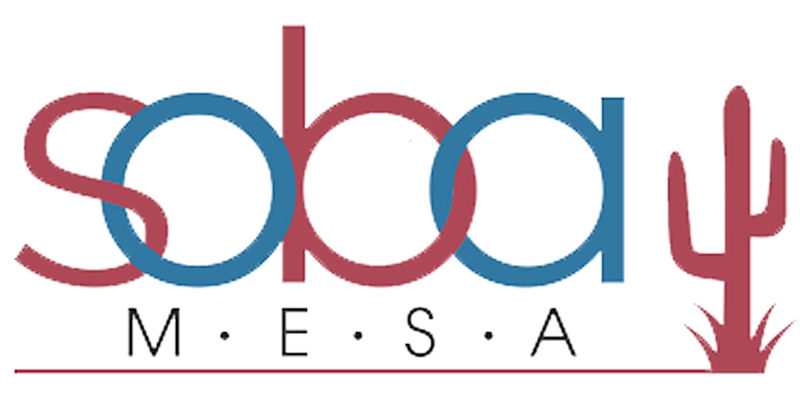Arizona has been considered a “gateway” state for drugs into the United States, as drugs were often smuggled in over the border. After an alarming increase in opioid deaths in Arizona in 2016, Governor Doug Ducey declared the opioid epidemic in the state a public health emergency in 2017. This spurred action to prevent opioid addiction and reduce opioid deaths in Arizona that improved the situation in the state and in 2018 Governor Ducey ended the public health emergency and Arizona continues the fight against the opioid overdose epidemic.
Commonly Abused Drugs in Arizona
Though opioids are a commonly abused drug in Arizona that has received a substantial amount of public attention, several other illicit drugs are also notably abused. At Soba Mesa, we want to inform our readers about the dangers of these commonly abused drugs.
Methamphetamine
Methamphetamine, or meth, is readily available and is actually the most commonly abused in Arizona. Meth is a highly addictive drug that affects the central nervous system. Meth acts as a stimulant and causes a powerful rush and makes people feel awake and energetic. It is highly addictive because people build a tolerance to it and need to increase doses to feel the same high, and a higher dose comes with inherently higher risks. The process of making meth in labs is quite dangerous because the chemicals used are toxic and can cause explosions. Meth is made from pseudoephedrine, an ingredient found in decongestants like Sudafed. Meth in Arizona comes from in-state labs, but also labs out of state in California and Nevada, though most is smuggled in from Mexico. Meth addiction is a difficult substance addiction to treat, but it is possible with the help of professional drug treatment programs.
Cocaine
Cocaine is another prominent drug in Arizona in both the form of powdered and crack cocaine. Cocaine is made from the leaves of the coca plant, native to South America, which is why a lot of the illicit drug is smuggled into Arizona from Mexico. Like meth, cocaine is a stimulant that is addictive as users become less sensitive to the effects of the drug and take increasingly large doses to obtain the same high. The high of cocaine happens almost instantaneously but tends not to be long lasting. Powdered cocaine is often snorted, rubbed into the gums, or injected, while crack cocaine is smoked. Dealers often mix cocaine with mundane substances like flour to increase profits, but sometimes cocaine is also mixed with amphetamines or synthetic opioids. These dangerous additives are especially insidious if the user is unaware of them. Though cocaine is addictive there are several methods of behavioral therapy that are effectively used to treat cocaine addiction.
Heroin and Other Opioids
Opioids including heroin are commonly abused drugs in Arizona, and the epidemic of opioid overdoses in recent years have drawn much attention to their prolific and dangerous presence in the state. Opioids are pain relievers but can be used to cause a powerful high. The majority of drug overdose deaths in the United States are caused by opioids. Several types of heroin predominant in the state originate from Mexico like black tar heroin. Heroin is an illegal semi-synthetic opioid made from morphine. However, opioid abuse can also originate from legal opioids used as prescription pain relievers. Legal opioids are safe when prescribed by a doctor and taken for a short time properly, but misuse or regular use even if they are prescribed by a doctor can lead to addiction. Though heroin use and prescription opioid deaths have actually begun to stabilize and even decrease slightly in the past several years, opioid overdose deaths caused by synthetic opioids like fentanyl have been on the rise since 2016. Arizona’s efforts to curb opioid abuse and overdose death have been primarily aimed at regulating prescriptions filled by the state, but opioids remain a large problem. Whether a person suffering from addiction uses a drug that is legalized or not, there is help out there in the form of professional treatment.
Tips on How to Get Help With Addiction
If you or a loved one is looking for help with their addiction there are several things you can do:
- Educate yourself—The SAMHSA National Helpline is a free, confidential treatment referral and information services for those struggling or know someone struggling with substance abuse disorders.
- Look for Support Groups—The first support groups that often come to mind for substance abuse are Alcoholics Anonymous and Narcotics Anonymous, but there are many alternative support groups like SMART Recovery, LifeRing or SOS.
- Seek Professional Treatment—Professional treatment for substance abuse works to break the cycle of addiction through medical detoxification, inpatient treatment, and aftercare in order to achieve long term recovery.
Finding Drug Centers in Arizona
Arizona has been putting in a substantial amount of work against drug abuse and there are many professional treatment centers in the state that offer a full-continuum of care. If you’re in Arizona struggling with any of the state’s commonly abused drugs, it may be difficult to break the cycle of addiction remaining in the same place. But you don’t need to travel out of state to seek great professional treatment. At Soba Mesa, we believe in compassionate, individualized care that focuses on the whole person. We are located east of Phoenix in Mesa, offering everything from the beginning phase of detox to aftercare to dedicate an extended amount of time and effort into treating addiction in order to prompt lasting recovery. If you want to learn more about how we can help you here in Arizona, please contact us today!



